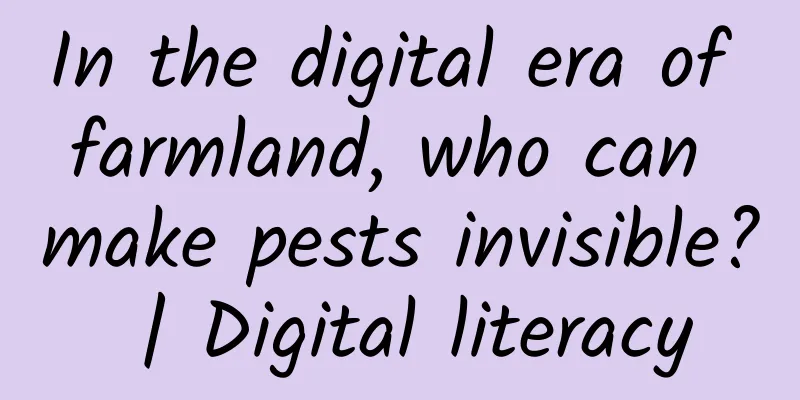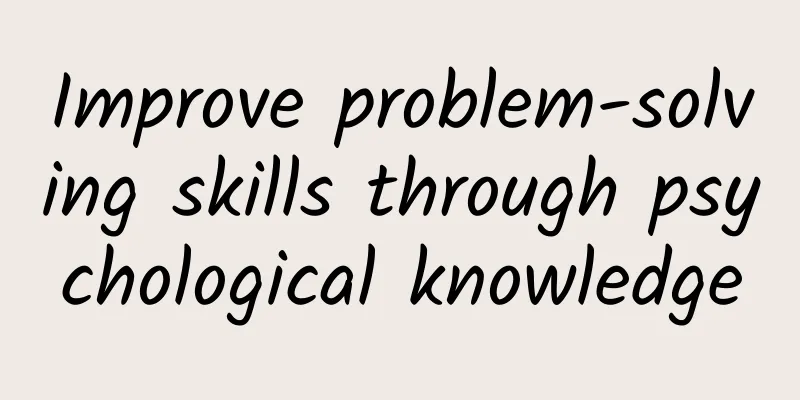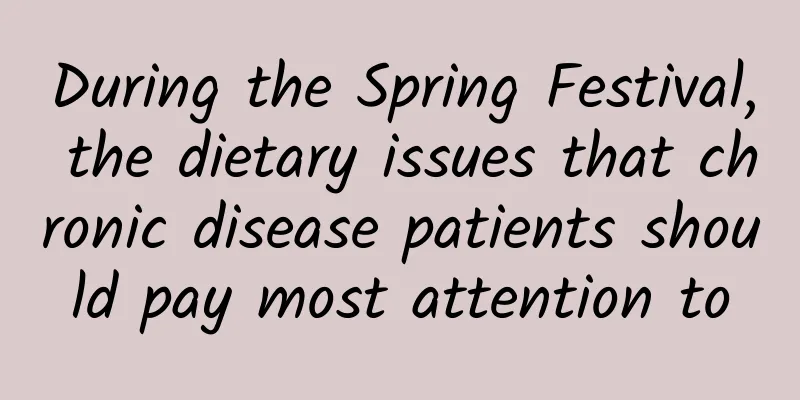In the digital era of farmland, who can make pests invisible? | Digital literacy

|
Insects, as the "big stars" in the animal kingdom, have become an indispensable part of the ecosystem with their amazing diversity and huge numbers. Insects belong to the class Insecta of the phylum Arthropoda. Their bodies are divided into three parts: head, thorax and abdomen. Adults usually have two pairs of wings and three pairs of legs, such as bees, ants and butterflies. But what people commonly call bugs also include other arthropods such as spiders, mites and centipedes. However, no matter what kind of "bug" it is, as long as it has a negative impact on human life and production, it is called a pest, such as mosquitoes, locusts, mites and so on. In order to raise public awareness of pest problems and promote the development of pest control technology, June 6th of each year is designated as World Pest Day. This is an important day to reflect on the challenges brought by pests and explore innovative control methods. With the advancement of science and technology, especially the rapid development of digital technology, we have ushered in a new era of pest control. 01 Fighting for food: a secret war in the insect world When we walk in the fields and admire the green rice fields and golden wheat fields, it is hard to imagine what kind of "secret war" is hidden behind them. Some cunning insects feed on crops, posing a serious threat to food production. According to statistics, the global losses caused by pests are as high as hundreds of billions of dollars each year, which makes pest control an important part of agricultural production that cannot be ignored. However, pest control is not an easy task. There are many types of insects with different habits. It is hard to accurately identify and effectively control them. Although traditional pest control methods, such as spraying pesticides and manual capture , can have certain effects, they often have problems such as high cost, low efficiency, and environmental pollution . Therefore, we need a more intelligent, efficient, and environmentally friendly pest control method. 02Digital technology helps create a new chapter in pest control With the continuous development of science and technology, the application of digital technology in the field of pest control is becoming more and more extensive. From "insect face recognition" to intelligent Internet of Things monitoring and early warning, to precise pest control, digital technology has brought new possibilities to pest control. 1. Insect face recognition: the master of pest identification Insect face recognition technology, as the name suggests, is to enable machines to identify insects like humans through the method of artificial intelligence deep learning . The core of this technology is to train an intelligent algorithm model that can identify different types of insects . In actual application, farmers only need to upload images of insects in the farmland to the system, and the system can quickly and accurately identify the type of insects. This not only improves the accuracy of insect identification, but also greatly reduces labor costs and time costs. Figure 1 White-banded Saw-winged Butterfly (copyright image from the gallery, reprinting may lead to copyright disputes) The Insect Identification Mini Program identifies the White-banded Sawbane (Source: Mini Program screenshot) Insect face recognition technology has a wide range of applications. We often use some small programs to identify insects and other arthropods. In the field of scientific research, scholars have also used this technology to carry out a series of studies. For example, the agricultural pest image intelligent recognition system developed by scholars such as Shao Zezhong has achieved accurate recognition of 66 common agricultural pests, providing strong technical support for pest control [1]. 2. Smart IoT monitoring and early warning: the “eyes in the sky” for pest control Intelligent Internet of Things monitoring and early warning technology is another important application of digital technology in pest control. This technology uses remote sensing satellites, GPS positioning systems and other means to monitor and warn of crop growth in real time. At the same time, the trapping detection device and insect face recognition technology designed in combination with the physiological and biochemical characteristics of pests can grasp the type, quantity, activity patterns and other information of pests in real time. This provides an important basis for early detection and comprehensive prevention and control [2]. The application of intelligent IoT monitoring and early warning technology allows us to detect the traces of pests in advance and set traps along their migration routes to kill them in one fell swoop. For example, the Institute of Plant Protection of the Chinese Academy of Agricultural Sciences successfully monitored the migration process of the apple hawk armyworm and used high-altitude insect traps to successfully kill more than 1.5 million pests, effectively protecting crops from damage [3]. Figure 2 Smart Agriculture and the Internet of Things (copyrighted image from the gallery, reprinting may lead to copyright disputes) 3. Precision pest control: Big data leads the future Based on pest monitoring and early warning, we can use big data technology to accurately control pests. By analyzing data such as pest types, numbers, and activity patterns, we can determine the best time to intervene and formulate management and control strategies . Then, we can use the IoT cloud controller and cloud platform to remotely control pests and realize automated pest control [4, 5]. When the pest density reaches a certain index, we can use automated spraying machinery to automatically spray pheromones to disrupt pest mating or use drones to precisely apply pesticides . This precise control method can not only timely control pests, but also reduce the abuse of pesticides and environmental pollution . Scientists have used multi-rotor drones to build an intelligent delivery system for trichogrammatid capsules, achieving an amazing 100% coverage of natural enemies [6]. Figure 3 Drone/automatic sprayer spraying pesticides (copyright image from the gallery, reprinting may cause copyright disputes) 03Summary and Outlook The application of digital technology in the field of pest control has shown us the power of science and technology and the hope for the future. Through technical means such as insect face recognition, intelligent Internet of Things monitoring and early warning, and precise pest control, we can achieve accurate identification and effective control of pests to protect agricultural production. With the continuous development and innovation of digital technology in the future, we have reason to believe that pest control will become more intelligent, efficient and environmentally friendly. Let us work together to welcome a better agricultural future! References [1] Shao ZZ, Yao Q, Tang J, Li HQ, Yang BJ, Lv J, Chen Y. Research and development of intelligent recognition system for agricultural pest images based on mobile terminals[J]. Chinese Journal of Agricultural Sciences, 2020, 53(16): 3257-3268. [2] Chen Shaoping, Zhao Jian, He Yuxian, Weng Qiyong, Huang Meiling, Chi Meixiang, Liang Yong, Qiu Rongzhou. Intelligent monitoring of the population dynamics of fall armyworm adults based on sex attractant and Internet of Things[J]. Plant Protection, 2022, 48(04): 94-99. [3] Institute of Plant Protection, Chinese Academy of Agricultural Sciences. The Institute of Plant Protection successfully tested its radar warning technology for intercepting migratory pests in the air[N]. Institute of Plant Protection, Chinese Academy of Agricultural Sciences, 2020-05-29 [4] Ghazanfara Latif, Jaafara Alghazo, Rb Maheswar, Vc Vijayakumar, Mohsind Butt. Deep learning based intelligence cognitive vision drone for automatic plant diseases identification and spraying[J]. Journal of Intelligent & Fuzzy Systems, 2020, 39(6):8103-8114. [5] Zhan Yousong, Xu Xinxin, Zheng Luying, Shen Weilie. Digital empowerment of crop pest and disease monitoring and early warning system construction[J]. Journal of Zhejiang Agricultural Sciences, 2022, 63(05): 1082-1087. [6] Yilong Zhan, Shengde Chen, Guobin Wang, Jinwei Fu, Yubin Lan. Biological control technology and application based on agricultural unmanned aerial vehicle (UAV) intelligent delivery of insect natural enemies (Trichogramma) carrier. Pest management science. 2021, 77,7: 3259-3272. author: Gao QionghuaLecturer, College of Agriculture, Guangxi University Chen Weichao, a postgraduate student in resource utilization and plant protection at Guangxi University Reviewer : Lan Mingying, Associate Professor, School of Digital Media and Design Arts, Beijing University of Posts and Telecommunications Produced by: Science Popularization China Produced by: China Science and Technology Press Co., Ltd., China Science and Technology Publishing House (Beijing) Digital Media Co., Ltd. |
<<: These 10 behaviors may seem fun, but they are actually very harmful to your health!
>>: Could climate change thousands of years ago have changed the direction of the ancient Silk Road?
Recommend
"Wild Man Fans" suddenly became popular! What happened to this generation of young people?
It’s too late to mourn the City Walk that went vi...
What changes will happen to the body 72 hours after death? (Don't be afraid, please read it with confidence)
This article was reviewed by Zhang Yinming, PhD i...
Can I open a Baidu framework account for promotion in Beijing?
Baidu framework account promotion and account ope...
A full-link analysis of Pinduoduo's New Year's Eve fission event
This article focuses on the disassembly of activi...
Unveiling the Douyin private domain operation methodology in four major industries
At the Douyin Enterprise Account Conference on th...
How to establish a complete user growth system?
The Internet has entered the second half of its e...
Android unit testing - verify the correct posture of function parameters and return values
[[175275]] Original link: http://www.jianshu.com/...
Even if they are not related, people who look alike share a lot of the same DNA?
Are there two people in the world who look extrem...
How much does it usually cost to create a WeChat knowledge payment mini program?
Knowledge payment mini programs are widely used i...
Let's talk about APP push and analyze how each end collaborates to complete the push task
[51CTO.com original article] Push function has be...
From a Cantonese novice to a Cantonese expert
Friends who often listen to music or watch movies ...
Visual note-taking is a technique used by learning experts. It is simpler and more efficient than mind mapping.
Visual note-taking is a technique used by learnin...
Heavy snow丨Cold clouds cover the sky, white snow falls on the ground
"At first the sound of tiles was heard spars...
Large capacity, zero attenuation, CATL Tianheng energy storage system debuts at ESIE 2024
On April 11, the 12th Energy Storage Internationa...
Three highs? Out! It’s necessary to understand this “fourth high” →
Popular Science Times reporter Shi Qi Recently, a...









